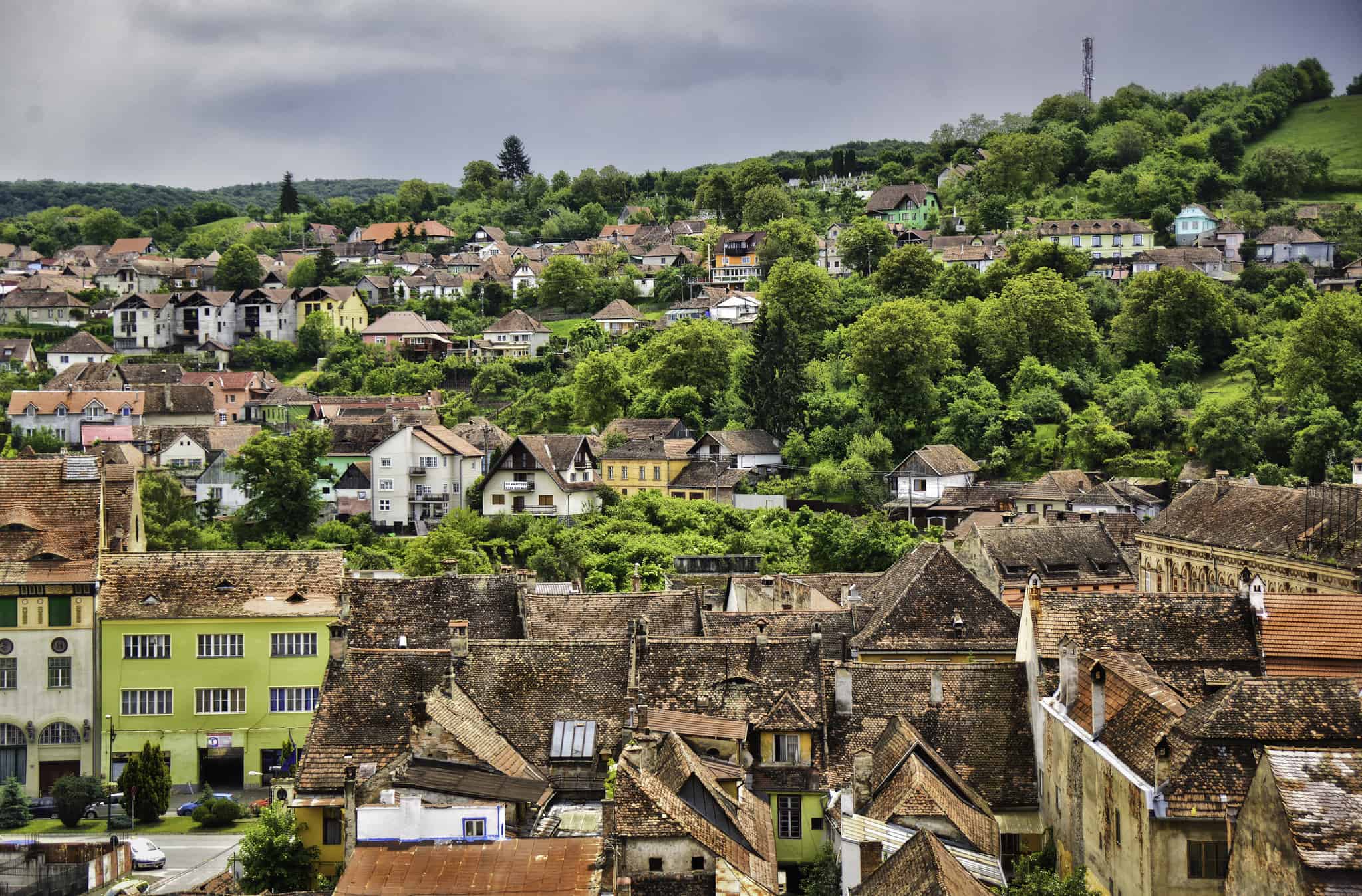Romania is a mostly-undiscovered treasure when it comes to travel despite a complex and fascinating history combined with a modern infrastructure that supports tourism. A visit could entail many days and cover ancient ruins, incredible architecture, haunted castles and a growing economy.
Sighișoara, Transylvania
 María Renée Batlle Castillo, Flickr
María Renée Batlle Castillo, Flickr
Not only is the walled city beautifully preserved, the houses were designed by craftsmen invited by the king and are bright and charming. In its heyday the city was the most important in the region and artisans were drawn to the area that also become a royal centre for kings. Despite sustaining some damage during multiple occupations and wars, Sighișoara remains one of the best-preserved citadels in Europe.
The 13th century clock tower is considered a city landmark standing 64 metres high and the historic walled citadel in the centre of the city is an inhabited World Heritage Site. An old staircase leading up to the Church on the Hill, a weapon museum and a bust of Vlad Tepeș (the inspiration for Dracula) are of interest but the big draw is the old-world charm of the entire city.
Peleș Castle
 https://www.flickr.com/photos/45525217@N02/
https://www.flickr.com/photos/45525217@N02/
In the Carpathian Mountains near Sinaia, Peleș Castle was commissioned by King Carol I and is currently owned by King Michael I. King Carol I demanded originality and the completed structure is a blend of European styles tied together with an elegant Italian design scheme. The surrounding gardens are manicured and feature Greco-Roman statuary.
The castle was expensive to build, roughly $150 million in today’s dollars, and the attention to detail shows. The 170 rooms are lavishly decorated with themes from other cultures, and the furnishings rival many museum collections in terms of quality, diversity and value. More than 2,000 paintings grace the walls and the Honor Hall features carved European walnut on the walls. The armory has more than 4,000 pieces that represent 4 centuries of history.
Bran Castle
 https://www.flickr.com/photos/29090934@N07/
https://www.flickr.com/photos/29090934@N07/
Not as opulent as Peleș, but in some ways more exciting, Bran Castle near Brașov is known for being the home of Dracula despite having little to do with either Vlad Tepeș or Bram Stoker. The location is certainly dramatic and the narrow stone chambers and stairways make it easy to imagine dangers hidden around the corners. There’s even a hidden passage that takes you from one floor to the next.
The courtyard fountain of covers secret passages and the soldier’s watchtower reminds visitors that this was a working defensive castle. The park on the estate is an open air museum exhibiting traditional structures from around the country including peasant cottages, crofts and barns.
Painted Monasteries
 https://www.flickr.com/photos/c0ntraband/
https://www.flickr.com/photos/c0ntraband/
Eight churches built between 1487 and 1583 are scattered around Suceava County, each in a different village. Known as the Painted monasteries, their exterior walls are painted with 15th and 16th century frescoes depicting scenes from the Bible, images of saints and prophets, and angels and demons. The images were not intended as art, but used to bring the story of the Bible to life and teach the villagers about important Orthodox saints.
Most of the monasteries are within 50 miles of the town of Suceava and can be toured in a day with a vehicle. Each church is as unique as the paintings that adorn it and is designed to suit the history of the village rather than being built identical buildings created as merely art stands. Of the monasteries, the most famous is Voronet for its intensely colored murals using a color now known as “Voronet Blue”.
Danube Delta
 https://www.flickr.com/photos/cost3l/
https://www.flickr.com/photos/cost3l/
The best preserved delta in Europe, the Danube Delta is second to the Volga Delta in size and spans both Romania and Ukraine. The total area is about 5,165 square km and has been growing since 4000 BC. Three distributaries branch off the Danube – two in Romania and a portion of the third shared with Ukraine. The area between these consists of wetlands, streams, rivers, lakes and marshes.
Over one million individual water birds from six eco-regions winter over in the delta. Species form Mongolia, the Arctic and Siberia are found here in addition to local species. The complex ecosystem of fresh/salt and standing/running water creates habits for unique plantlife and a mix of land and water-loving animals. Although the region is constantly changing, presently there are beaches on two of the distributaries and a few tourist amenities as well.
The Black Sea
 https://www.flickr.com/photos/vporof/
https://www.flickr.com/photos/vporof/
Romania borders the inland salt sea and numerous towns along the shore are designed for beachgoers. In many areas white sand beaches stretch along the shores providing excellent sunbathing opportunities and access to the water. The Black Sea is large enough to have waves that lap the shore but is protected enough to have calm, warm waters for swimming.
Have you ever been dazzled by Romania?
Let us know - drop us a line below!
Related content on Canadian Traveller


